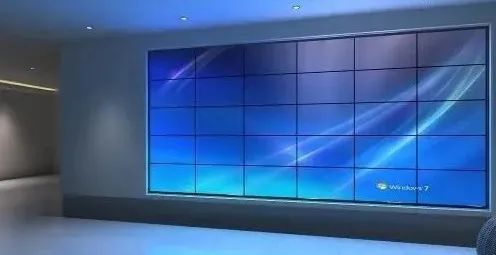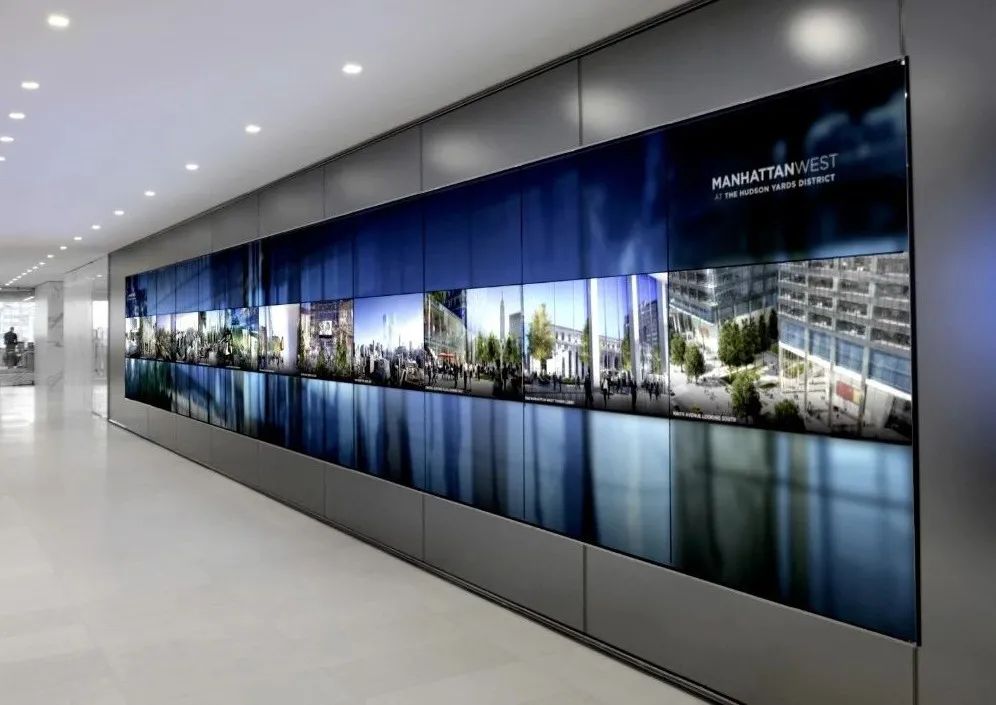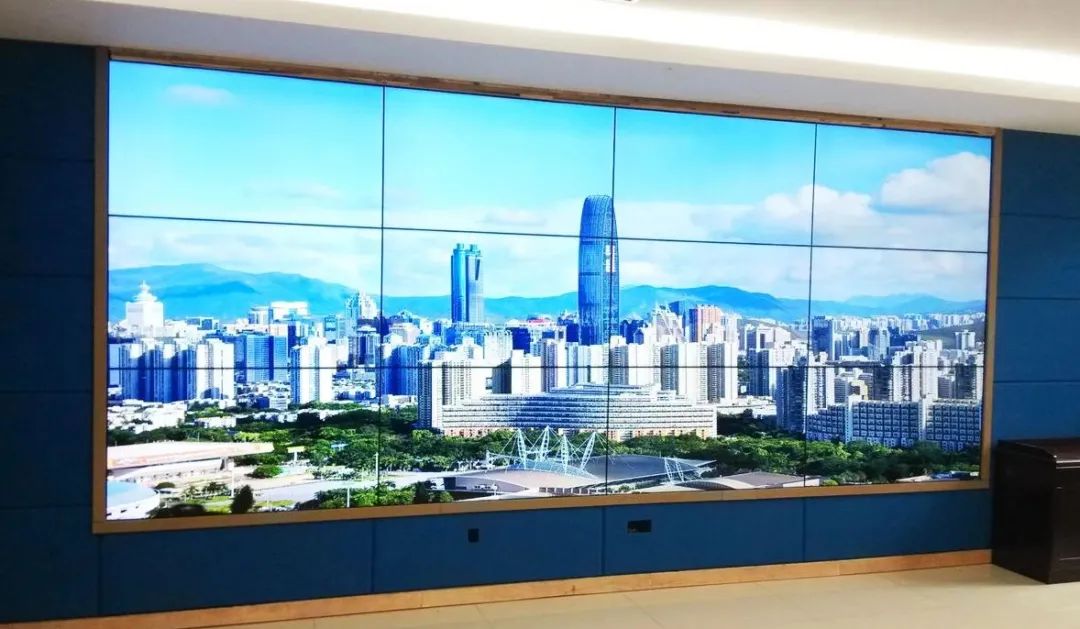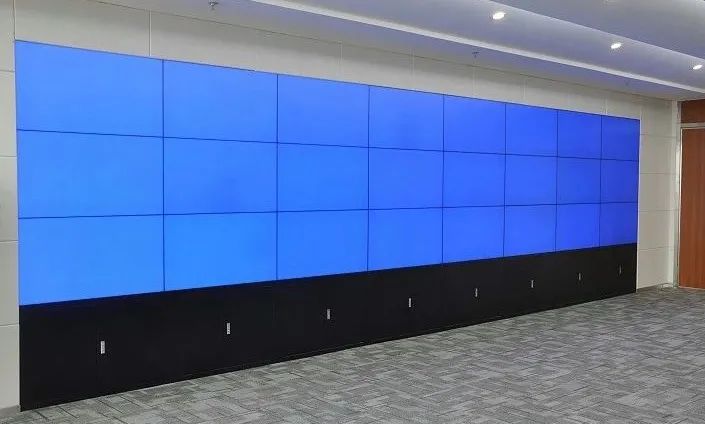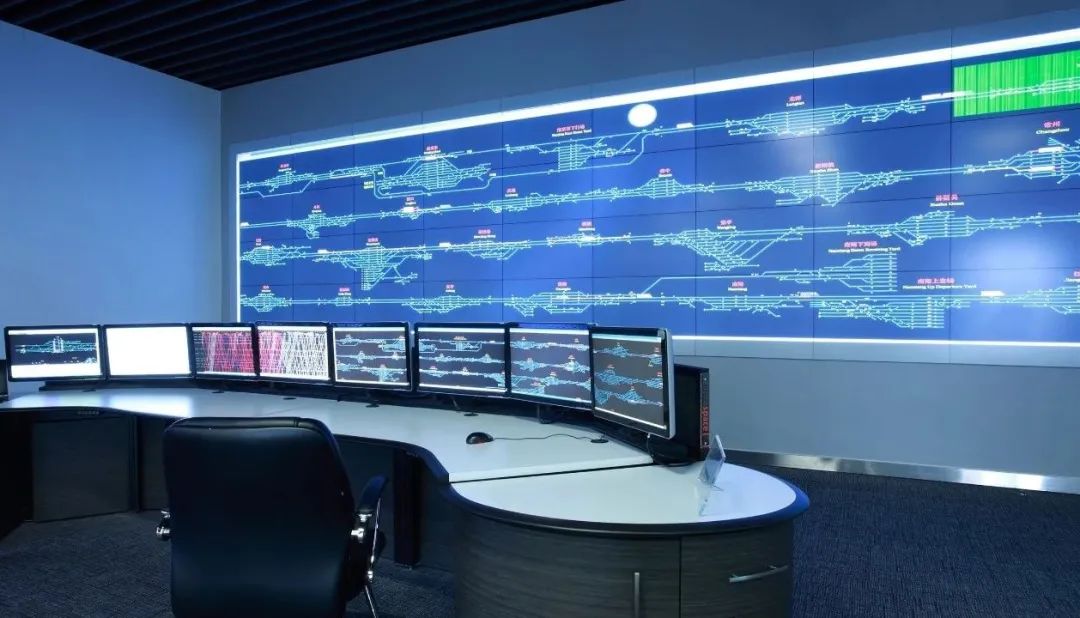As a highly regarded terminal display device on the market, splicing screens have applications across various fields including government, broadcasting, education, venues, and transportation. They are frequently seen in daily work and life.
Due to their large screen size and high-definition display, splicing screens present a wealth of information to a broader audience, enhancing people’s work and life experiences.
Currently, common types of splicing screens include LED screens and LCD screens, each with its advantages and widespread applications. Below are three small facts about splicing screens that we hope will help you make a better choice.
What Are the Advantages of LCD Splicing Screens Compared to LED Splicing Screens?
LCD splicing screens support 24/7 operation and high-definition display. As the seams become smaller, the display quality has improved significantly, making them suitable for exhibition halls and meetings.
LCD splicing screens have brightness suitable for prolonged viewing, and high color contrast, allowing for better color reproduction of source files.
LED splicing screens do not yet meet high-definition requirements, resulting in noticeable pixelation and lower clarity.
LED brightness is too high for indoor use, making it glaring, while reducing brightness affects display quality.
LED stability is not as good as that of LCD; over time, LED bulbs may fall off or die, affecting the viewing experience.
Therefore, LED splicing screens are commonly used for outdoor advertisements and exhibitions. With decreasing pixel pitch, they are gradually being applied indoors, such as in press conferences, auditoriums, and exhibition halls, where seamless splicing enhances the overall display integrity.
Can the Seams of LCD Splicing Screens Be Eliminated?
The seams of LCD splicing screens have always been a significant factor affecting the continuity and aesthetics of the overall image. LCD splicing screens have been continuously overcoming this bottleneck.
There have been significant breakthroughs, with ultra-narrow bezels now achieving a minimum seam of 3.5mm, highlighting the advantages of splicing, leading many users to prioritize ultra-narrow bezel LCD splicing screens.
LCD splicing screens utilize LED edge-blending display technology, which effectively resolves the black edge issue, achieving seamless video display.
This leap in technology meets the needs of various specialized industries, enhancing both the overall display quality and detail of the large splicing screen.
Does Long-Term Operation Affect the Lifespan of LCD Splicing Screens?
The optimal operating temperature for LCD splicing screens is between 0~40℃. If the actual environmental temperature is harsh, it is best to install air conditioning and set the temperature to 25~26℃ to ensure the LCD splicing wall is in optimal working condition.
The commonly mentioned 7×24 hours of continuous operation is the peak value for LCD splicing screens and represents an ideal state. In practical applications, users who wish to extend the lifespan of LCD splicing screens should try to give them a “break”.
Every product has a lifespan. Prolonged operation of LCD splicing screens can easily cause overheating of certain pixels, leading to damage. When users need long-term operation, they can intermittently stop the display or change the screen display at different time intervals.
During standby, reducing brightness or operating in screen saver mode can prevent the aging of the LCD screen and extend its lifespan.
Depending on the user’s actual usage, we recommend using waterproof LED splicing screens outdoors that can adjust brightness for full-screen advertising. For large indoor venues, ultra-small pitch LED splicing screens can offer better cost-effectiveness. In settings like meetings, teaching, and monitoring, where clear visual presentation is needed to engage viewers, LCD splicing screens can be employed.
Source: Yantai Hengtai LED (Reproduced for sharing, please delete if infringed)
Want to follow us
Don’t get lost
Long press the QR code below
to recognize and follow
▼
Phone: 18685093999
Telephone: 0854-2779389
Address: Yongyang Street Office, Weng’an County

Qianyuan Technologyhas extensive experience in small program development and operation, having collaborated on numerous projects including Guizhou Huieran Housekeeping Co., Ltd. small program, Weng’an Huaqiang Dental small program development, etc. It is a company that integrates software development, APP, website construction, public account and WeChat mini-program development, e-commerce, and more..



